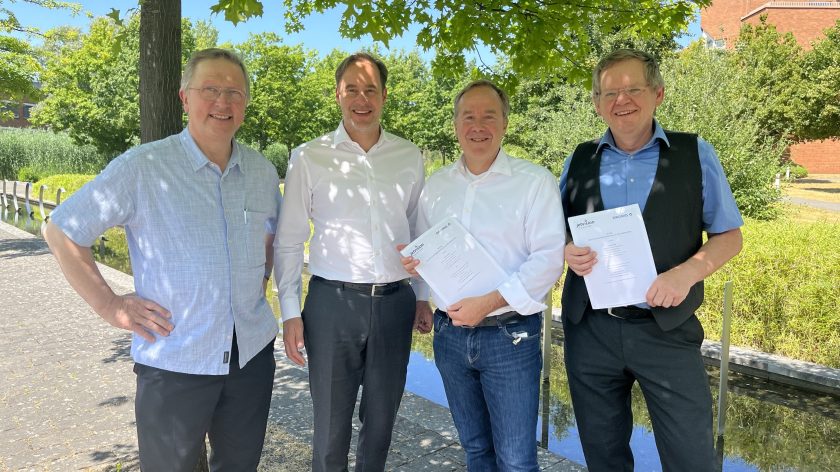German Uncrewed Traffic Management (UTM) company Droniq has signed a cooperation agreement with jetvision aimed at “extending the visibility of air traffic in very low-level airspace”. Through the agreement, Droniq will be able to track the position of all participants in air traffic that use any of the common technologies for collision avoidance or position broadcast, raising safety levels for all airspace users.
Due to the low altitude, the air traffic participants flying in very low-level (VLL) airspace cannot be detected by conventional sensor technologies, such as radar. A comprehensive means to make airspace users digitally ‘visible’ is not yet available. At the same time, the level of air traffic taking place here is increasing, especially commercial and government drone use.
According to the company press release, Droniq has been increasingly illuminating air traffic in very low-level airspace with its antenna technology. Now, it has the capability to cover the airspace at low altitudes down to treetop level. This has been made possible by the new cooperation agreement with jetvision, based in Munich, Germany, the leading manufacturer of receivers for transponder signals emitted by aircraft. Jetvision’s technology detects all airspace users using commonly available technologies, such as ADS-B, FLARM®, Mode A/C and Mode S. In addition to drones, these include sailplanes and small aircraft.
been increasingly illuminating air traffic in very low-level airspace with its antenna technology. Now, it has the capability to cover the airspace at low altitudes down to treetop level. This has been made possible by the new cooperation agreement with jetvision, based in Munich, Germany, the leading manufacturer of receivers for transponder signals emitted by aircraft. Jetvision’s technology detects all airspace users using commonly available technologies, such as ADS-B, FLARM®, Mode A/C and Mode S. In addition to drones, these include sailplanes and small aircraft.
Explaining the move, Droniq CEO Jan-Eric Putze said: “As a company, Droniq is about advancing commercial and government drone use. Besides the technology and expertise, what is needed here above all is ‘visibility’. It is only when users can detect each other in very low-level airspace that they can safely co-exist. Through the cooperation agreement with jetvision, we are taking a big step towards making exactly that possible on a large scale throughout Germany.”
Günter Köllner, CEO of jetvison, added: “Our receivers and software enable the detection of low[1]flying aircraft in areas that conventional radar cannot reach.” “With over 600 receivers in Germany alone, we have a well-developed and steadily growing network of ground-based reception technology and are also in a position to flexibly drive local expansion with cost-effective technology. We are pleased to have Droniq as a partner with whom we can jointly contribute to increasing flight safety in drone operations.”
Droniq makes the movements of airspace users visible as part of its live air situation display. In addition to the current position, it also shows who the users are and at what altitude, direction and speed they are travelling.
Droniq plans to further expand the detectability of users in very low-level airspace going forward.
For more information visit:




